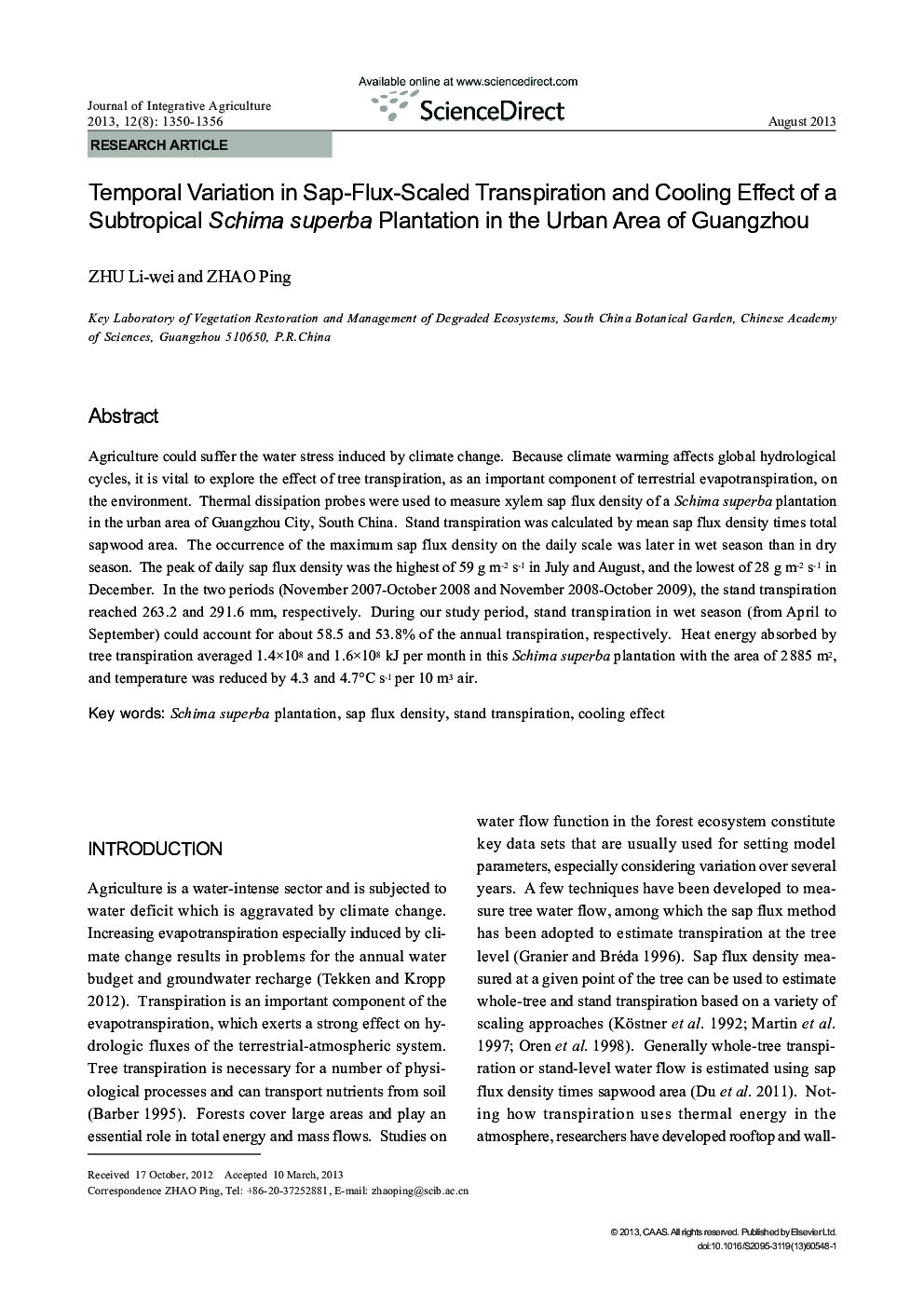| Article ID | Journal | Published Year | Pages | File Type |
|---|---|---|---|---|
| 4494934 | Journal of Integrative Agriculture | 2013 | 7 Pages |
Agriculture could suffer the water stress induced by climate change. Because climate warming affects global hydrological cycles, it is vital to explore the effect of tree transpiration, as an important component of terrestrial evapotranspiration, on the environment. Thermal dissipation probes were used to measure xylem sap flux density of a Schima superba plantation in the urban area of Guangzhou City, South China. Stand transpiration was calculated by mean sap flux density times total sapwood area. The occurrence of the maximum sap flux density on the daily scale was later in wet season than in dry season. The peak of daily sap flux density was the highest of 59 g m−2 s−1 in July and August, and the lowest of 28 g m−2 s−1 in December. In the two periods (November 2007-October 2008 and November 2008-October 2009), the stand transpiration reached 263.2 and 291.6 mm, respectively. During our study period, stand transpiration in wet season (from April to September) could account for about 58.5 and 53.8% of the annual transpiration, respectively. Heat energy absorbed by tree transpiration averaged 1.4×108 and 1.6×108 kJ per month in this Schima superba plantation with the area of 2 885 m2, and temperature was reduced by 4.3 and 4.7°C s−1 per 10 m3 air.
